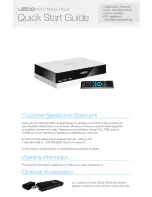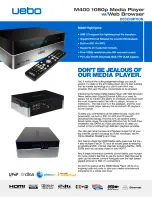
Design Guide & Applications Manual
Maxi, Mini, Micro Family DC-DC Converters and Configurable Power Supplies
Maxi, Mini, Micro Design Guide
Rev 5.0
Page 3 of 87
03/2018
1. High-Density DC-DC Converter Technology
AC-DC Products
DC-DC Products
Universal
85 – 264V
AC
Autoranging
90 – 132V
AC
180 – 264V
AC
Autoranging
90 – 132V
AC
180 – 264V
AC
Autoranging
115 – 230V
AC
Input
Nominal Input
18 – 425V
DC
28V
DC
, 48V
DC
,
270V
DC
24V
DC
, 28V
DC
,
48V
DC
Harmonic Attenuator Module
Unity Power Factor
Up to 675W
per module
Filter / Autoranging Rectifier Module
Up to 1,000W
Autoranging Rectifier Module
Up to 1,500W
Front-end System
for EN Compliance
Up to 550W
Transient Protection,
Inrush Current Limiting EMI Filter
Up to 25A
Active EMI Filter
Up to 576W @ 48V
DC-DC Converter
Up to 600W per module
1 – 54V
dc
MINIHAM
FARM3
QPI
DC-DC Converter
Up to 300W per module
1 – 48V
DC
DC-DC Converter
Up to 150W per module
1 – 48V
DC
Single wire paralleling for
high power, fault tolerant arrays.
Output Ripple Attenuation Module
combines active and passive filtering.
QPO provides active filtering to
achieve differential noise attenuation.
QPO
DC-DC Products
High Boost
HAM
The Maxi, Mini, Micro Family of DC-DC converters are an integral
part of the company’s overall component power solution
strategy (Figure 1.1), which includes advanced factory and design
automation. The modules are available in an unlimited variety of
standard versions, to the extent that the line between custom and
standard DC-DC converter bricks becomes almost indistinguishable.
The design of the control, magnetic, switching and packaging
elements of the module resulted in a component with a power
density of up to 120W/in
3
(7,3W/cm
3
) in three package sizes:
Maxi
4.6 x 2.2 x 0.5in [117 x 55,9 x 12,7mm]
Mini
2.28 x 2.2 x 0.5in [57,9 x 55,9 x 12,7mm]
Micro
2.28 x 1.45 x 0.5in [57,9 x 36,8 x 12,7mm]
The modules have one-third the number of parts of
their predecessors.
While the natural by-products of this reduction in parts count has
improved reliability and lower cost. The extra space also means that
the bulk of the converter can now be devoted almost exclusively to
the power train (i.e., the magnetic and switching elements at the
core of the design).
Resistors can be used to trim the output voltage up or down, if
necessary. Six pin styles, three baseplate options and a variety of
data collection and reporting options are available. The devices
have an operating temperature range of –55 to 100°C and come in
five product grades – E, C, T, H and M.
Other specifications include a typical no-load to full-load regulation
of ±0.5%, a programmable output of 10 – 110%, conversion
efficiencies of up to 92% depending on the voltage combination
and power level chosen, and an input-to-output isolation test
voltage of 3,000V
RMS
[4,242V
DC
]. All models are parallelable with
N+M fault tolerance and current sharing. Paralleling architectures
feature DC- or AC-coupled interface.
Figure 1.1 —
Component power solutions with the Maxi, Mini, Micro Family





















